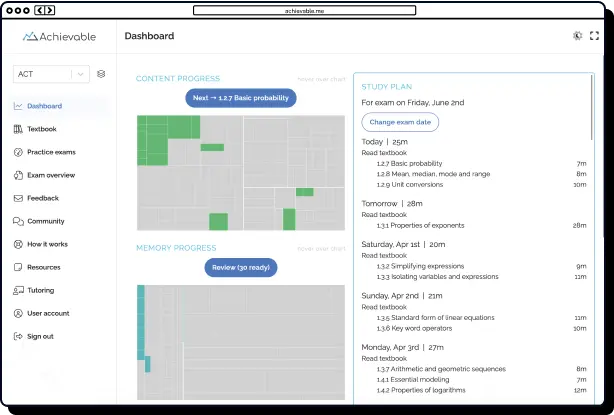
How a life insurance medical exam works




Table of contents
- Why insurers require a medical exam
- What happens during a life insurance medical exam
- Scheduling the exam
- Health questionnaire
- Physical measurements
- Lab tests and samples
- Additional testing
- How long does the exam take?
- How to prepare for a life insurance medical exam
- What insurers are looking for
- What happens after the exam
- Alternatives to a medical exam
- Common concerns and misconceptions
- Final thoughts
An important measure you can take to help secure your family’s financial future is applying for life insurance. On top of selecting the right policy and completing the necessary paperwork, many applicants are required to undergo a life insurance medical examination as part of the application process.
While the idea of a medical exam to determine coverage details may seem daunting, the life insurance medical exam is typically quick, straightforward, and provided at no cost to you. Most exams are completed in under an hour and are similar to a basic doctor’s check-up. This step can actually benefit policyholders by allowing the insurance company to accurately assess their health, often resulting in more favorable coverage options and lower premiums based on individual health profiles.
Understanding how to “pass” the life insurance medical exam and what the assessment involves can help you feel more confident and prepared. If you’re a life insurance agent or preparing to get your insurance license, know that life insurance medical exams will play a crucial role in underwriting and determining insurability. This comprehensive guide covers all the essentials: the reasons behind the exam, what to expect during the appointment, tips to ensure readiness, and how results can affect policy options and rates.

Why insurers require a medical exam
Insurance companies take on significant financial risk when they issue a life insurance policy. The life insurance medical exam is a crucial tool that insurers use to accurately assess risk and quantify premium amounts. Here’s why the life insurance medical exam matters:
- Fair pricing: The life insurance medical exam allows insurers to set a premium that reflects your current health status. Applicants in good health often qualify for lower life insurance rates.
- Coverage accuracy: Results from the life insurance medical exam help insurers recommend coverage options and policy types that best match your health profile and needs.
- Risk management: By reviewing your medical history and exam results, insurers can better manage risk, reduce uncertainty, and maintain fairness for all life insurance policyholders.
Think of the life insurance medical exam as your “health credit check,” not a pass/fail test in the traditional sense. Just as lenders review credit history before approving a loan, insurance companies use the medical exam to evaluate your health before offering life insurance coverage.
What happens during a life insurance medical exam
The process is far less intimidating than many imagine. Here’s what you can expect step by step:
Scheduling the exam
- After applying, the insurance company will arrange the exam at no cost to you.
- You choose the location: at home, at work, or at a local medical office.
- The exam is handled by a licensed nurse or paramedical professional.
Health questionnaire
You’ll answer questions about:
- Personal medical history (any past or current conditions).
- Family medical history (including hereditary risks such as heart disease or diabetes).
- Lifestyle habits (smoking, alcohol use, exercise, sleep, diet).
The key here is honesty. Even if you omit something, insurers often check prescription history or medical records. Being upfront avoids delays and builds trust.
Physical measurements
This part feels like a standard check-up:
- Height and weight (to calculate body mass index).
- Blood pressure and pulse (to measure cardiovascular health).
Lab tests and samples
The most important part of the exam involves:
- Blood draw: Tests cholesterol, blood sugar, liver/kidney function, and more.
- Urine sample: Screens for nicotine, drugs, or health issues.
These tests provide a detailed snapshot of your internal health.
Additional testing
For larger policies or older applicants, insurers may request:
- Electrocardiogram (EKG/ECG): Measures heart rhythm.
- Chest X-ray or stress test: Rare, but sometimes needed for high coverage amounts.
Most people only go through the standard blood and urine tests.

How long does the exam take?
A standard exam takes 20 - 30 minutes. If extra tests are required, it could take up to an hour. Since the exam can often be done at your home or office, it’s convenient and minimally disruptive.
How to prepare for a life insurance medical exam
Your results can be influenced by short-term factors, so smart preparation is key. Here are ways to put your best foot forward:
- Get a good night’s sleep: Being well-rested helps stabilize blood pressure and heart rate.
- Skip caffeine, alcohol, and salty foods: These can cause temporary spikes in blood pressure or affect hydration levels. Blood exams typically require fasting up to 12 hours prior.
- Stay hydrated: Drinking water makes blood draws easier and keeps results accurate.
- Eat lightly the day of the exam: A heavy, greasy meal can affect cholesterol and blood sugar readings.
- Bring identification: Typically, a government-issued ID.
- Have your medications list handy: Note any prescriptions or supplements you take.
Preparing well ensures you are at your healthiest and provides accurate results.
What insurers are looking for
The exam isn’t designed to uncover flaws, but rather provides a comprehensive snapshot of your health. Insurers assess several key factors during the medical screening:
- Heart health: Blood pressure, cholesterol levels, and pulse rate are measured, as these impact both longevity and premium costs.
- Metabolic health: Fasting blood sugar is checked to spot diabetes or prediabetes, crucial indicators in determining the overall cost of life insurance.
- Substance use: Nicotine, illegal drugs, or excessive alcohol use is tested for, since these behaviors affect insurability and influence rates.
- Body mass index (BMI): Insurers review BMI to gauge fitness and any potential weight-related health risks, both of which impact how to approach your life insurance medical exam.
- Organ function: Kidney and liver markers are tested to identify possible issues that could increase future health risks or raise life insurance costs.
Each of these health factors plays a role in predicting life expectancy, thereby helping insurance providers set your premium rate. Understanding these elements makes it easier to prepare, improve your outcomes, and keep the cost of life insurance as low as possible.
What happens after the exam
Once you’re done, here’s the timeline:
- Processing: Results are sent to the insurance company within 7-14 days.
- Review: Underwriters analyze your test results in conjunction with your health history.
- Decision: You’ll receive one of the following:
- Approval with preferred rates (if results are excellent).
- Approval with standard rates or slightly higher premiums (if some risk factors exist).
- Policy adjustment (coverage amount or terms).
- In rare cases, denial.
Don’t panic if your results aren’t perfect. Many people still qualify for coverage, though the exam may place you in a higher pricing tier.

Alternatives to a medical exam
Not everyone prefers or needs a medical exam when applying for life insurance. If you’re looking for life insurance without a medical exam, you have a couple of convenient options:
- Simplified issue life insurance: This policy type allows you to skip the medical exam, though you’ll still answer a few basic health questions.
- Guaranteed issue life insurance: With this option, no medical exam or health questions are required; approval is guaranteed for most applicants.
These types of life insurance policies without a medical exam are faster and more accessible, but they typically:
- Have a higher cost of life insurance compared to traditional policies.
- Provide lower coverage limits, which may not be ideal if you need substantial protection.
Life insurance without a medical exam can be a smart solution for individuals who want quick coverage, have pre-existing health conditions, or are concerned about qualifying through traditional underwriting processes.
Common concerns and misconceptions
- “If I don’t pass, I can’t get life insurance.”
False, the exam doesn’t pass or fail. It only affects rates and coverage options, and complete denial is rare.
- “It’s invasive and uncomfortable.”
Not at all, it’s similar to a regular check-up, with just a quick blood draw and urine sample.
- “My results will be public.”
Incorrect, your results are confidential and shared only with the insurance company.
Final thoughts
A life insurance medical exam might seem like a hassle, but it’s actually a quick, easy, and cost-free process designed to help you secure coverage and protect your loved ones’ financial future. To enter your exam with confidence, remember these key elements: proper preparation, honesty during your responses, and a clear understanding of the process all contribute to a smoother experience.
While appearing healthier can lead to lower rates and better policy options, getting coverage is still possible even if the exam uncovers some health issues. Remember, even if your exam results aren’t perfect, life insurance remains within reach for most applicants, and for some policies, you may not even need a medical exam to get life insurance at all.

